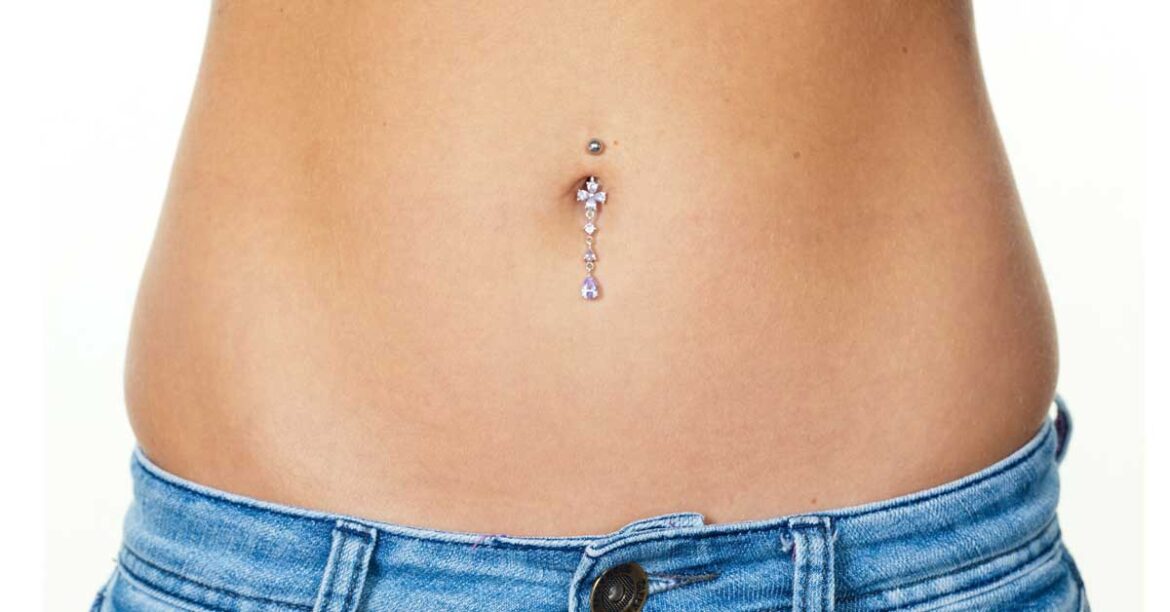What is Belly Piercing?
Belly piercing is a popular form of body modification.
It involves making a small hole in the skin and then inserting a piece of jewelry into the opening.
The most common type is the navel piercing, which is done through the center of the navel.
Belly piercings can be done for aesthetic or personal reasons.
Some people believe that belly piercings can have spiritual or cultural significance.
Belly piercings are generally safe when done properly.
However, there is a risk of infection or other complications.
It is important to clean the piercing site and jewelry regularly.
The American Academy of Dermatology does not recommend body piercings for people who have certain medical
conditions, such as diabetes or blood-clotting disorders.
If you are considering getting a belly piercing, it is important to talk to a dermatologist or other medical professional first.
They can help you understand the risks and decide if body piercings are right for you.
What are the Different Types of Belly Piercings?
There are several different types of belly piercings.
The most common is the navel piercing, which is done through the center of the navel. Other types of belly piercings
include surface piercings, dermal piercings, and vertical hood piercings.
Surface piercings are performed on the flat surface of the skin.
They can be done anywhere on the body, but they are most commonly done on the chest, back, or shoulder.
Dermal piercings are inserted into the skin with a needle.
They can be done anywhere on the body, but they are often done on the face, neck, or hand.
Vertical hood piercings are done through the skin around the clitoris.
What are the Risks & Complications of Belly Piercing?
Belly piercings are generally safe when done properly.
However, there is a risk of infection or other complications.
It is important to clean the piercing site and jewelry regularly.
What is the Process of Belly Piercing?
The process of belly piercing is generally safe when done properly.
First, a small hole is made in the skin around the navel.
Then, a piece of jewelry is inserted into the opening.
What is the Pain Level of Belly Piercing?
The pain level of belly piercing can vary from person to person.
Some people report feeling only a minor amount of discomfort, while others may find the proccess quite painful.
How Long Does It Take to Heal?
The healing time for belly piercings can vary depending on the individual.
In general, it takes around 6-8 weeks for the piercing to heal completely.
How to Care for Belly Piercing?
It is important to clean the piercing site and jewelry regularly.
The American Academy of Dermatology recommends using a mild soap and water to clean the area around the piercing.
You should also avoid touching the piercing or jewelry with dirty hands.
It is important to see a doctor if you notice any signs of infection, such as redness, pain, or discharge.
What are the Different Types of Jewelry?
There are a variety of different types of jewelry that can be worn in belly piercings.
The most common type is the barbell, which is a straight bar with two balls on either end.
Other popular options include captive bead rings, circular barbells, and dermal Anchors.
Can I Change My Jewelry?
Yes, you can change your jewelry after the piercing has healed.
It is important to talk to a professional piercer before changing your jewelry.
They can help you choose the right type of jewelry for your piercing and make sure it is inserted properly.
How Much Does Belly Piercing Cost?
The cost of belly piercing can vary depending on the location, jewelry, and other factors.
In general, the cost ranges from $30 to $100.
Does Belly Piercing Make Complications at Pregnancy?
There is no evidence to suggest that belly piercing has any implications on pregnancy.
However, it is important to talk to your doctor if you are pregnant or planning to become pregnant.
The Bottom Line
Belly piercing is a type of body modification that involves making a small hole in the skin and then inserting a piece of
jewelry into the opening around the navel.
It is generally safe when done properly, but there is a risk of infection or other complications.
The healing time for belly piercings can vary depending on the individual, but it usually takes around 6-8 weeks.

